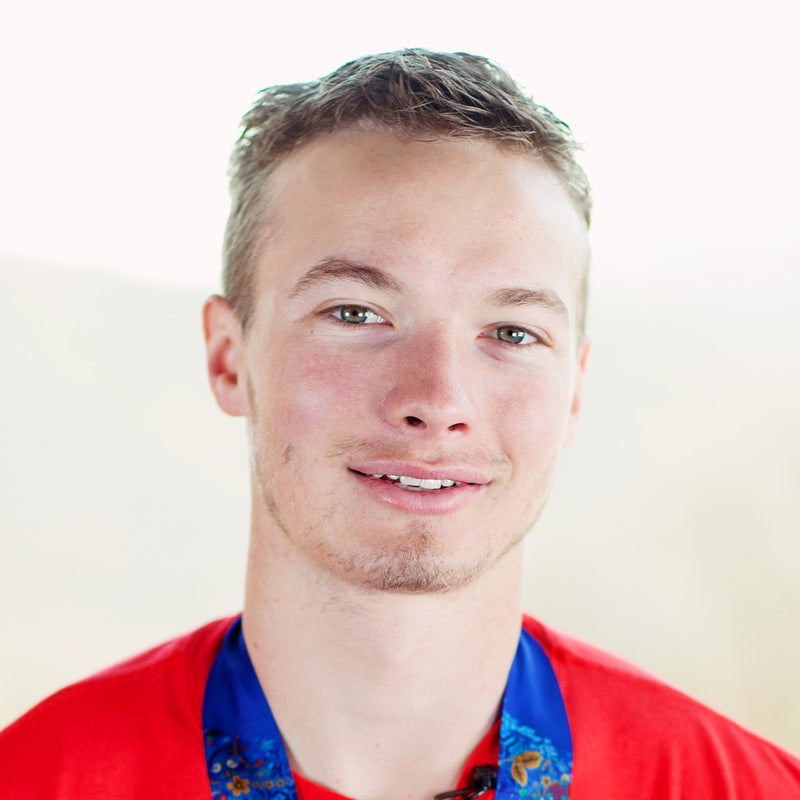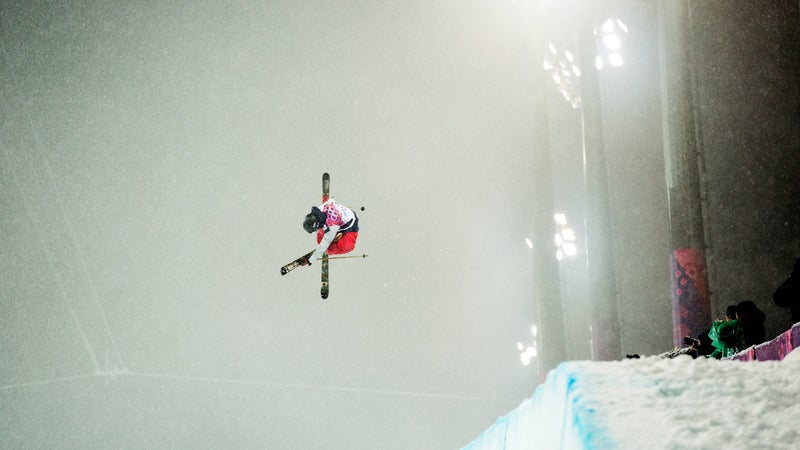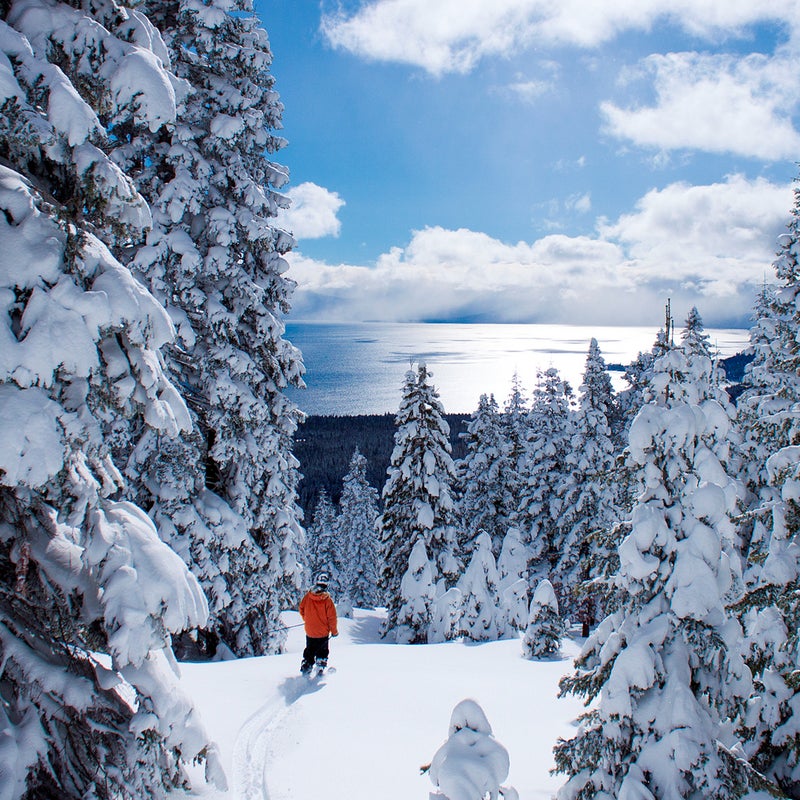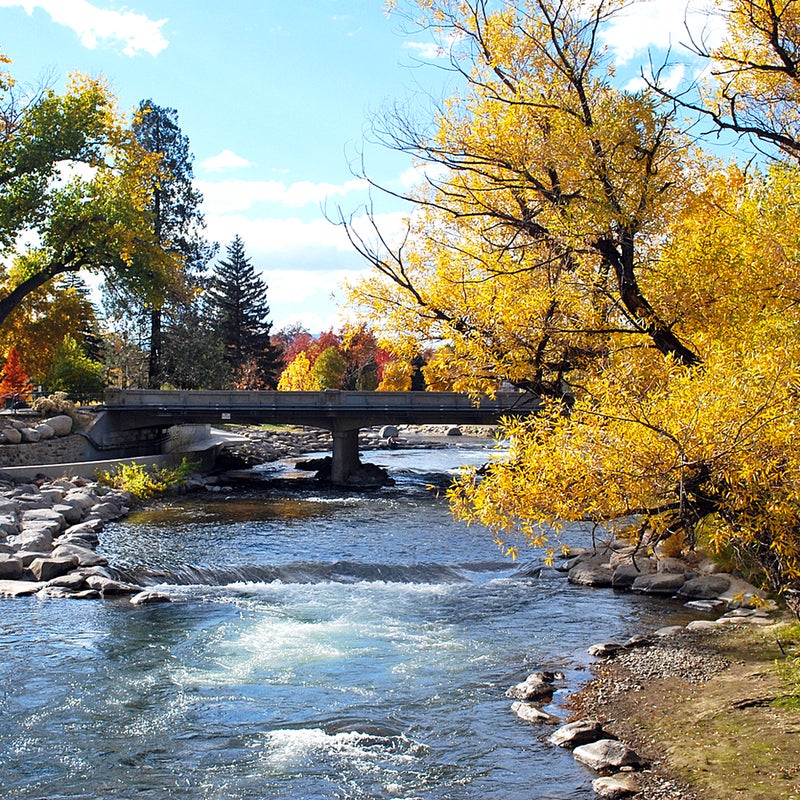My Nevada: David Wise
Olympic gold medal–winning freestyle skier David Wise counts on his Reno home to keep him on top
“I travel around the world to all of the best mountain towns and supposed ‘best places to live,’ but coming home never feels like I’m missing out,” says 25-year-old pro skier David Wise. “Everything I want and need is right here.” Home in this case is Reno, Nevada, or more specifically, his house situated on the Truckee River in Verdi, the small town located up the eastern slope of the Sierra Nevada, roughly 400 feet above the city among the high-desert scrub and pines. “I’ve got the mountains to the west, the city to east, my family’s here—I don’t need anyplace else.”
That Wise remains committed to being “from Nevada” even after winning his freeskiing gold medal at the Sochi Games in 2014 put him on solid enough financial footing to move anywhere speaks volumes. He could’ve chosen Colorado, home to his sport’s biggest event, the X Games in Aspen; or Park City, Utah, where the U.S. Ski and Snowboard Association’s training complex is located; or even up Interstate 80 in Tahoe, where he’d be closer to the area’s resorts. Instead, he stayed home.

And why not? Reno is what made him the world champion he is today. Wise was born in the city—his mother and father settled there in the 1970s, partly due to its easy access to skiing. By age three, Wise was learning to ski with his father at Sky Tavern, a city-owned ski hill 20 minutes from downtown. “My sisters are four years older than me and were already skiing with my dad,” Wise explains.
“He was eager to get me out on the hill with them. He’d ski with me all day, with me in a backpack or between his legs. That’s how I got into it.”
Soon Wise graduated to the bigger mountains in the Lake Tahoe basin and started ski racing by age eight. But racing through gates never interested him. Going as fast and as high as possible did. “I actually grew up wanting to snowboard,” admits Wise. “I’d see those guys in the halfpipe and in the terrain parks doing stuff I wanted to do.”
His father, who raced collegiately on a skiing scholarship at Northern Arizona University, told Wise he could switch to snowboarding only after he’d mastered skiing. “Fortunately, about that time, freeskiing started to get popular, and the first twin-tip skis came out (which allows skiing both forward and backward). It was no longer just snowboarders using the terrain parks and halfpipes,” remembers Wise. At age 11, he got his first pair of new freeskiing sticks and joined them, adapting the skills he picked up in racing to the park and pipe.
“Getting married and becoming a father completely changed my perspective,” Wise says. “I realized that I could be content whether winning or losing on skis because I had the love and support of my family. I stopped saying to myself, ‘What do I have to do to win?’ and started saying, ‘What do I want to accomplish on a pair of skis?’”
Wise kept at it, winning his first U.S. national title at 15 and turning pro at 18. He began slowly working his way up the rankings on the World Cup circuit and learning how to succeed as an action-sports athlete. He enjoyed solid results early, but wins were elusive.
In 2009, he dedicated himself to making the jump from podium regular to champ: Wise spent all winter skiing in North America, then followed winter down to New Zealand, where he honed his arsenal of tricks, including the first-ever double cork 1260 in a halfpipe (a move where Wise completes three-and-a-half rotations, two of which are flips).
Then, in 2010, Wise injured his ACL during his first competition and had to return to Reno to rehab. The time at home changed everything. He reconnected with the woman who would become his wife, and just before the start of the 2011–12 season, his daughter was born. “They both completely changed my perspective,” Wise says.
“I was forced to mature and see myself as more than just a skier. I realized that I could be content whether winning or losing on skis because I had the love and support of my family. I stopped saying to myself, ‘What do I have to do to win?’ and started saying, ‘What do I want to accomplish on a pair of skis?’”

With a fresh look on life and the halfpipe, Wise steadily rose through the ranks. He qualified for his first X Games final in 2011. The next season was his breakout year, when he won the X Games, Dew Tour, and U.S. Grand Prix.
That momentum hasn’t stopped. In addition to his 2014 gold in the Winter Olympics, Wise took home the World Cup trophy in 2015—all while adding another child to his young family.
This year, Wise is focused less on creating a wholly new trick or pushing the limits of physics and gravity and more on putting together unique combinations of tricks that haven’t been tried before, such as spinning in different directions with each aerial launched off the halfpipe.
It’s there, high above the snow, where Wise finds the special rush that keeps him committed to his sport: “There’s a weightless feeling at the apex of a jump where everything seems to stop and become crystal clear. That’s the best moment, and it’s why I’ll always love the halfpipe.”
And when gravity brings him back down to earth, Wise can count on his family and Nevada roots to be there for him.
Playground, Reno
Pro freeskier David Wise takes advantage of his hometown’s easy access to the Sierra to stay in shape mentally and physically for the World Cup circuit. Here are his top summer and winter escapes in the area.

Winter: On the other side of the highway from Mount Rose ski area in Nevada sits Mount Rose Summit, a National Forest recreational area dominated by 10,776-foot Mount Rose. It’s a with runs off the flanks of Mount Rose and snowmobile-accessible pitches deeper into the Humboldt-Toiyabe National Forest.
“What I love about Sierra snow is that when storms come through, they dump two to three feet of snow,” Wise says. “And it’s heavy Pacific snow. Two feet of it is all you need to feel confident about jumping off anything and trusting there’s solid coverage. It’s not like the dry snow in the Rockies where even with two feet of powder, you sink right through to the bottom.”

Summer: The in the Sierra foothills northwest of Reno offer more than 15 miles of interconnected singletrack mountain bike riding with 2,000 feet of climbing and fast, swooping descents.
is as easy as stepping into the Truckee River between the city proper and the state line in Verdi. Anglers can cast for browns, rainbows, cutthroat, mountain whitefish, and carp.
“I mountain bike all summer to stay in shape, riding two to three days a week for up to two hours at a time. From my house in Verdi, I’ll head down to the Peavine Trail network,” says Wise. “And I fish any chance I can get. There’s a reason I bought a house 150 feet from the Truckee River.”
Anytime: For more information on recreating in and around Reno, as well as the rest of the state, please visit

